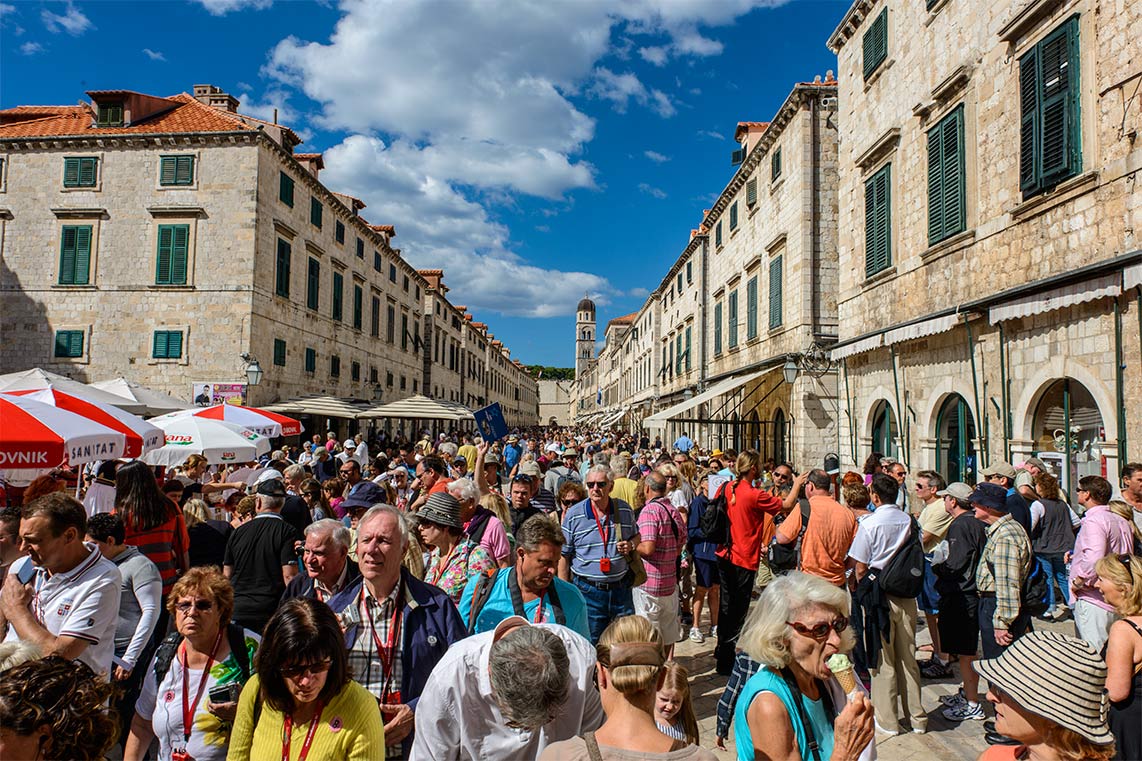General Information About Dubrovnik
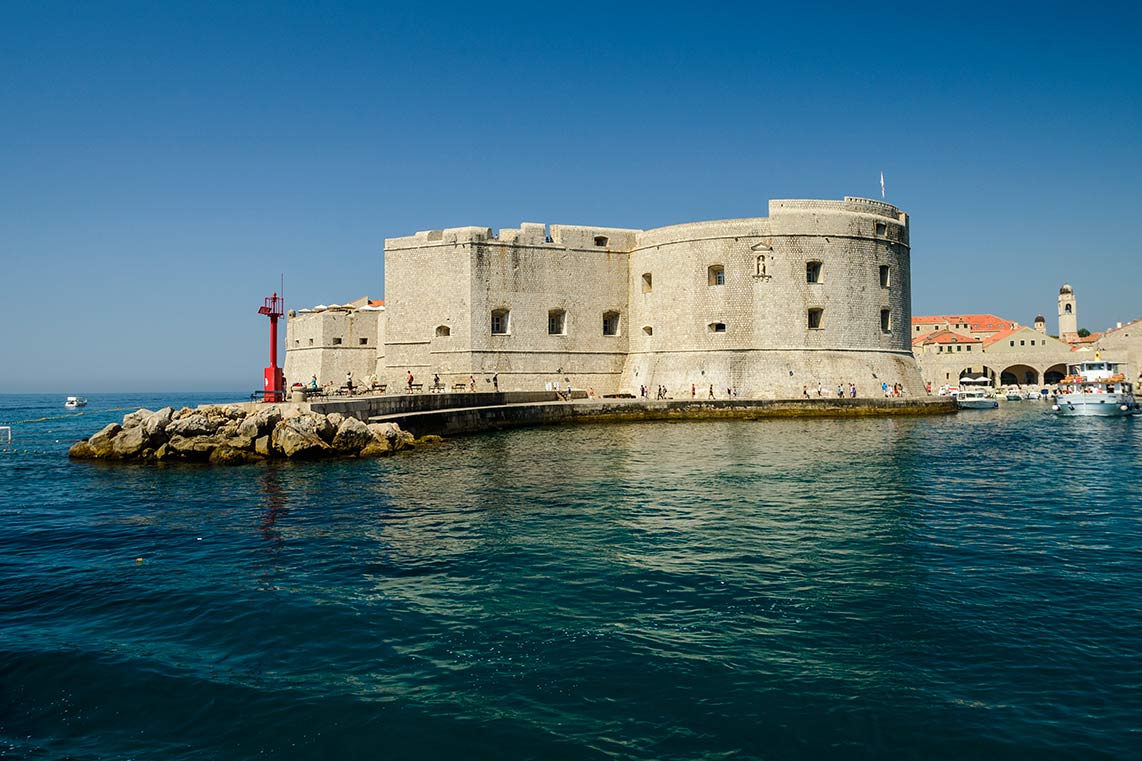
CULTURE AND HISTORY
Dubrovnik, because of its long and eventful history, is considered a European cultural centre.
History is alive in every part of this city – it is both a museum city and at the same time a live
stage; here the present and the past live side by side.
Every nook and cranny of this 'Pearl of the Adriatic', as it is known, hides a treasure. The city is
surrounded by 1940 meters of unique medieval ramparts, preserved in their original form and
open to visitors as the city's flagship attraction. Protected by UNESCO World Heritage status
since 1979, Dubrovnik can boast one of the first such listings in Croatia. Its rich history,
geographic location, mild climate, traditional hospitality and outstanding tourist facilities make
Dubrovnik a recognized high quality destination on the international market.
Dubrovnik is Croatia’s leading convention centre, hosting more conventions, congresses and
corporate incentive programs than any other location in the country. The city is a destination of
culture, as witnessed by its many festivals, prestigious art happenings, major open air events,
excellent artists and athletes, and, last but not least, its architectural treasures. Sixty-three
years of the Dubrovnik Summer Festival and twelve years of the Julian Rachlin & Friends
Chamber Music Festival add to the testimony. The Libertas Film Festival is a world film venue
and the excellent Early Music Festival, the traditional celebration of the city’s patron saint Saint
Blaise and the Carnival can carry the visitor back to the golden age of the city in the 16 th
century, a period vividly evoked in the dramas of Croatian Renaissance playwright Marin Držić.
The opera gala nights add a touch of splendour to the constantly expanding list of the city’s
cultural attractions, all aspiring to meet the highest standards. The variety of cultural events on
offer lies at the heart of many a visitor’s decision to come and enjoy the unforgettable
Dubrovnik evenings to the strains of virtuoso musicianship coming from the atriums of the
city’s palaces, all bathed in the moonlight reflected on the calm, resplendent patina of the
Adriatic.
Dubrovnik is easily reached from all major European cities, a destination that will leave you
enchanted by its myriad stories and once- in-a- lifetime experiences, a destination to fall in love
with and come again and again... The sight of luxury cruisers off the Old Town harbour is a
witness to the growing importance of Dubrovnik as Croatia’s foremost cruise port of call,
ranking fifth in the Mediterranean as the city becomes an indispensable addition to more
Mediterranean cruise itineraries.
During the last few years Dubrovnik has been turning into a high profile city break destination
favoured by good airline connections throughout the year. Based on the interest expressed by
major markets the trend is set to continue and will undoubtedly put Dubrovnik closer yet to the
goal of year-round tourist operations.
George Bernard Shaw was enchanted by this beautiful city, about which he said “those who
seek paradise on Earth should come to Dubrovnik”, as well as, famously, describing it as “the
Pearl of the Adriatic”. Regardless of whether you are visiting Dubrovnik for the first time or the
hundredth, the sense of awe never fails to descend when you set eyes on the beauty of the old
town. Indeed it’s hard to imagine anyone becoming jaded by the city’s marble streets, baroque
buildings and the endless shimmer of the Adriatic, or failing to be inspired by a walk along the
ancient city walls that protected a civilised, sophisticated republic for centuries.
Although the shelling of Dubrovnik in 1991 horrified the world, the city has bounced back with
vigour to enchant visitors again. Marvel at the interplay of light on the old stone buildings; trace
the peaks and troughs of Dubrovnik's past in museums replete with art and artefacts; take the
cable car up to Mt Srđ; exhaust yourself climbing up and down narrow lanes – then plunge into
the azure sea.
Dubrovnik Monuments
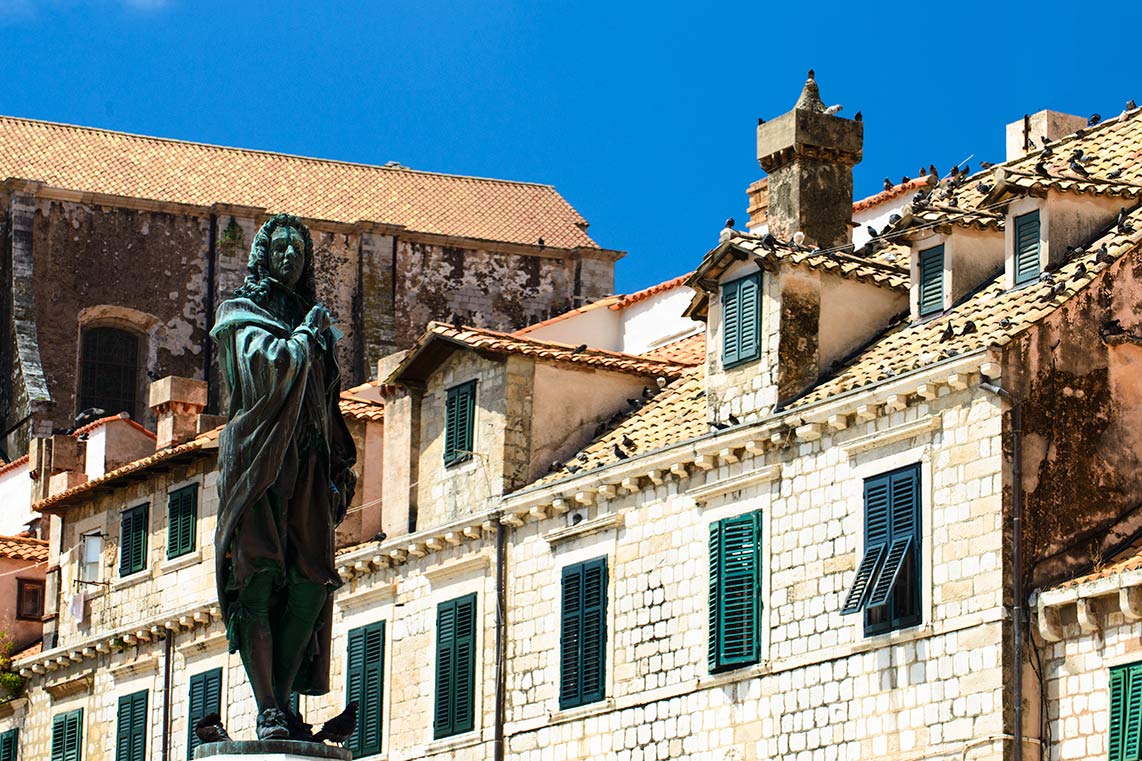
Monuments as a string of pearls that includes both a material and a non-material
heritage.
The value of Dubrovnik was recognised by UNESCO already thirty years ago, while the
Festival of St. Blaise joined the List of the Intangible Cultural Heritage of Humanity in
October 2009. The Dubrovnik Republic, which represents the golden period of its
history, is characterised in its very detailed statute that regulated many aspects of the
life of the city.
The Republic did not generally erect monuments to its contemporaries, but made an
exception for the the seaman Miho Pracat as the only person to deserve this great
honour. The most familiar figure, to be seen in many striking examples around the town,
is that of St. Blaise holding a model of the City in his hand…
When you are in Dubrovnik you will be immediately aware that the Old Town is one big
monument in itself. This magnificent town just takes your breath away with its beauty
and the sense of history in every building, street and corner. The monuments in
Dubrovnik are like a string of pearls, both in the physical presence of the buildings and
in the less tangible effects of culture and of the stories that have been lived here. The
particular value of Dubrovnik was recognized by UNESCO thirty years ago, while the
Festival of St. Blaise joined the List of the Intangible Cultural Heritage of Humanity in
October 2009. During the golden age of the Republic, which lasted about four centuries
until the arrival of the French in 1808, Dubrovnik, regulated by its statute, was
remarkable for its development and sophistication.
The Republic did not erect monuments to its contemporaries. The seaman Miho Pracat
is the only individual who was given this great honour, while the figure which one sees
most often, watching over the town from many positions on the walls, St Blaise holding
in his hand a model of the City. So this City, within the protective embrace of its walls,
stands today as a monument to a rich historical legacy waiting to be explored once
more when you pass through its gates.
Sacral Objects In Dubrovnik
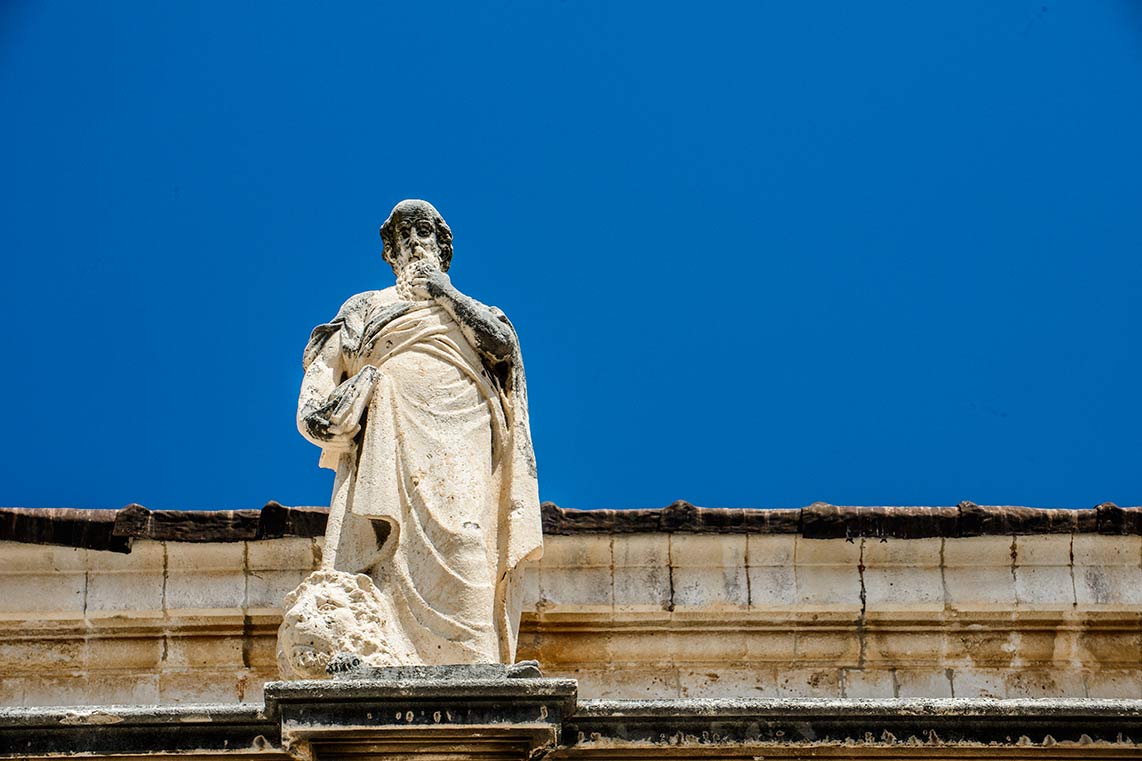
The 'Pearl of the Adriatic', situated on the Dalmatian coast, became an important
Mediterranean sea power from the 13th century onwards. A small city and a onetime
state, Dubrovnik has always been a cultural metropolis. As one of UNESCO World
Heritage Sites, Dubrovnik owes some of its special charm to the historic monuments
which testify to its rich history. The works of the artists, writers and scientists of
Dubrovnik have been woven into the texture of the city, whose tourist reputation and
attractiveness are based on its culture. Numerous highly valuable churches and other
sacral objects, the city walls, fortresses and museums of Dubrovnik enchant every
visitor to this ancient city. Among many cultural events including exhibitions, concerts
and plays, particularly prominent is the Dubrovnik Summer Festival, with its musical and
theatrical performances taking place in numerous open-air venues.
The sacral objects of Dubrovnik represent a real treasure of historic, architectural and
artistic heritage.
Leaving its mark on the Republic’s history, religion offered shelter and solace in times of
trouble and became a symbol of the stone city’s survival. A visit to its impressive
churches, which represented the power and importance of religion in the lives of people
at the time, or to the small secluded chapels in which the sufferings, secrets and joys
were shared with the Almighty, and one of Europe’s oldest synagogues takes us back
into the past, but also connects us with the present day, because church services are
still organised in the majority of the Dubrovnik churches.
Among the most famous are:
The Franciscan Monastery
The old Franciscan Monastery was originally situated not in its present day location
adjacent to St. Saviours Church between Stradun and Fort Minčeta. The wars
threatening the Dubrovnik Republic in the early 14 th century made the Franciscans move
from their previous position on Pile outside the city walls into the City. The construction
of the Monastery began in 1317 and lasted for many years. It is nowadays considered a
true jewel of Croatia’s cultural and artistic heritage.
Certain sections of the large Franciscan Monastery were destroyed over the course of
time, especially in 1667 when a devastating earthquake befell the City. One can get an
idea of the elegance and beauty of the original church only on the basis of the south
portal with its Gothic architrave comprising an astonishingly beautiful and moving Pieta.
The statue of the Mother of God holding her dead son on her knees, dating from 1498,
is a masterpiece of the Dubrovnik sculptors, the brothers Leonard and Petar Petrović.
The present day Franciscan Church was restored in the Baroque style. It houses the
tomb of the great writer Ivan Gundulić. The Monastery cloister, the work of Mihoje
Brajkov of Bar in the Late Romantic style, is considered one of the finest in Dalmatia
from that period.
Church of St. Blaise
One of the most beautiful sacral buildings in Dubrovnik, the present-day Church of St.
Blaise was constructed in 1715 in the flamboyant Venetian Baroque style. It was
designed by the Venetian master Marino Gropelli in 1706, on the commission of the
Dubrovnik Senate which requested a new church on the site of the old 14th century
Romanesque church.
Damaged during the earthquake for the first time, the church was destroyed completely
by the devastating fire in 1706. Everything disappeared in flames, apart from the silver
statue of St. Blaise which was miraculously saved. After years spent in exile at the
Church of St. Nicholas on Prijeko, the statue was returned to its old place in 1715. The
people of Dubrovnik added the following inscription on the statue ‘all other statues made
of gold, silver and bronze melted in the fire, while the saint’s statue was miraculously
undamaged’. The statue is one of the most important statues in Dubrovnik, and the
model of the city which the saint holds in his hand reveals something of the city
architecture at the time.
St. Blaise has been honoured as the patron saint of Dubrovnik from the 10 th century.
According to the chroniclers of Dubrovnik, St. Blaise saved the people of Dubrovnik in
the 10 th century when the Venetians anchored their ships in Gruž and in front of the
Island of Lokrum. The people of Dubrovnik believed the Venetians assurances that they
would depart for the Levant after they had supplied themselves with food and drink. The
visitors used the opportunity to see the sights and observed the weaknesses in the City
defence. However, St. Blaise revealed their intentions in a dream to the parish priest
Stojko and thus saved the City from the night attack. The priest described him as an old
grey-haired man with a long beard, a bishop’s mitre and a shepherd’s crook in his hand.
Precisely the way his statues on the city walls and towers look today. Celebrated on 3
February, St. Blaise’s Day is also the City of Dubrovnik Day.
Dubrovnik Museums
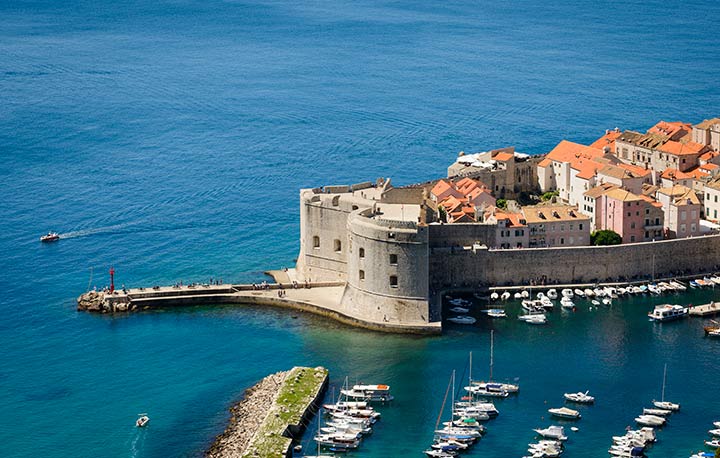
With its exquisite architecture, rich heritage and history preserved in every stone, Dubrovnik is
both a museum city in itself and a city with a large number of museums. Housing much material
from prehistoric artefacts to recent documents from the not-so-remote time of the Croatian
War of Independence in the 1990s, the Dubrovnik Museums, each in its specialised field, offer
information on all segments of the public, private, trade, seafaring and every-day life of
Dubrovnik.
The Patriotic Museum, forerunner of Dubrovnik Museums, was founded in 1872 at the
instigation of the Chamber of Trade and the Commune Council. The museum was located on
the first floor of the commune building of the time and was opened to the public in 1873. Its
nucleus consists of a fine natural history collection, added to which are cultural, historical and
archaeological collections a collection of folk handicrafts.
Today Dubrovnik Museums are a complex regional establishment comprising five specialised
museums: the Cultural History Museum, Maritime Museum, Archaeological Museum,
Ethnographic Museum and Museum of Contemporary History. Their ample holdings are on
show in buildings that are themselves heritage structures of the highest order of importance.
The Cultural History Museum is located in the Rector's Palace, seat of government and
residence of the Rector of the Dubrovnik Republic. In its permanent display, an endeavour has
been made to conjure up the authentic ambience of historical events, and in the presentation
of artworks from the collection to represent the rich cultural, artistic and historical heritage of
the Dubrovnik Republic.
The Ethnographic Museum is located in the greatest granary of the Republic, Rupe (The Holes),
where, in the setting of the authentic historical space, the traditional culture of the Dubrovnik
regions is presented.
The Maritime Museum is located in Fort St John, and its permanent display presents the famed
maritime past of the Dubrovnik area.
The Archaeological Museum has no permanent display. Its holdings cover heterogeneous
materials from prehistory to the late Middle Ages. Some of the material is shown in Revelin
Fort, in the framework of two thematic exhibitions: ‘Early Medieval Sculpture in Dubrovnik’ and
‘Revelin – Archaeological Research/ Spatial Development / Foundry’.
The Museum of Contemporary History has no permanent display, but part of the material is
shown in the framework of the temporary exhibition ‘Dubrovnik in the Homeland War’ set up in
Fort Imperial on Srđ. This material keeps 20 th century material, with a special emphasis on the
time of the Homeland War (1991-1995).
Dubrovnik Natural Sites
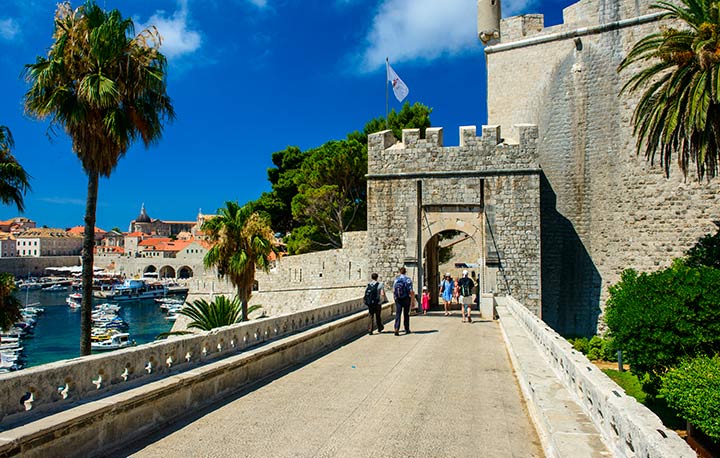
Dubbed the ‘Pearl of the Adriatic’, beautiful Dubrovnik offers a wealth of attractions
for visitors. Famous for its spectacular seafront location on the Dalmatian coast
coupled with its evocative and historic old city center, Dubrovnik was founded in the
7 th century and has been ruled through the centuries by the Venetians and the
Hungarians, each of which have left their mark. The city enjoyed its greatest growth
in the 15 th and 16 th centuries, a fact reflected in the impressive architecture and its
designation as a UNESCO World Heritage Site. Home to Croatia's artistic and
intellectual elite, Dubrovnik offers numerous cultural activities and festivals. Highlights
of a visit include walking around its picturesque old streets and alleys while visiting
such outstanding attractions as its splendid cathedral and treasury, the broad
Stradun pedestrian street, and its many fine old palaces and fortifications.
The green Mediterranean landscape, the azure depths of the Adriatic and white sea
cliffs...
the fragrances of herbs growing in the clearings, historical gardens, the aquarium
with the most intriguing species of the sea world, are a part of the heritage which
visitors may discover in Dubrovnik and its surroundings. Ecology has become a more
and more important aspect of our life, and the protection of environment and life in
accordance with nature are both our obligation and our duty. We take great pride in
the outstandingly preserved natural monuments, the world’s bluest and cleanest sea,
the unique flora and fauna, and the fascinating subterranean caves. Arrival in
Dubrovnik offers enjoyment of the azure sea and sky, unique sunsets and natural
sights of our region.




